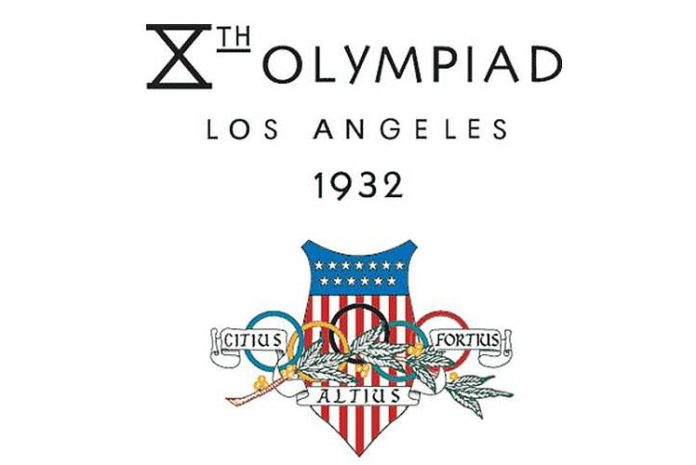★ The Sports Examiner: Chronicling the key competitive, economic and political forces shaping elite sport and the Olympic Movement.★
★ To get the daily Sports Examiner Recap by e-mail: sign up here! ★
≡ GAMES OF THE Xth OLYMPIAD ≡
The Games of the XXXIV Olympiad in Los Angeles will close on 30 July 2028. On 30 July 1932, the Games of the Xth Olympiad opened before 101,022 in the Los Angeles Memorial Coliseum.
And the 1932 Games was a grand success: aesthetically, athletically and financially:
“Although no official figures are available, it is apparent that the Olympic Games made a lot of money.”
That’s the lead of a Los Angeles Times story from 16 August 1932, two days after the closing of the Games of the Xth Olympiad, held in Los Angeles in the depths of the Great Depression. There was more:
“There are rumors that the show cleared more than $1,000,000 above actual operating expenses, which cover a period of several years.”
The next day, The Times carried a story with Xth Olympiad Committee President William May Garland’s announcement that the organizing committee would pay back the $1 million bond issued by the State of California in 1929 to get the organizing effort started. The “California Olympic Bond Act of 1927″ was voter-passed by 73-27% in November 1928 to provide initial funding for the development of the 1932 Games, given to Los Angeles by the International Olympic Committee in 1923. The Times story included:
“The $1,000,000 provided by the State was virtually the only money received by the committee with the exception of receipts from ticket sales, concessions and incidentals. No money was provided by city, county or public subscriptions, it was pointed out.”
Inevitably, there was a fight over the organizing committee surplus. But the story of how the 1932 organizers got to a surplus was remarkable:
● The Official Report following the Games in 1933 listed a stunningly small staff of just 70 full-time staff members in the organizing committee.
● In terms of revenue, 1,247,580 tickets were sold – about 42.4% of capacity – bringing in $1,483,536. A total of 331,518 programs were sold at 10 cents each, bringing in $33,152, and the organizing committee received a share of venue concessions run by a local (unnamed) firm.
● The men’s Olympic Village charged $2 per person per day; there were 1,503 athletes entered, plus coaches and officials, but no totals on the number of days was published, but operations ran from mid-June to the end of the Games on 14 August and a few days more. A conservative guess on revenue would be $100,000 in all, including the women’s housing at the Chapman Hotel.
● So, the total revenue from operations – remember, no concluding financial statements were ever released – from the Games was probably around $1.7 million, allowing for concessions and post-Games equipment sales. Adding in the $1 million bond issue and the Xth Olympiad Committee probably realized a total of about $2.7 million in total income.
Now, a little money went a long way in 1932, not only for salaries, but also for venues. Almost all of the venue sites for the 1932 Games were either donated or rented for out-of-pocket expenses, and the organizing committee paid for the temporary modifications it needed. The organizers paid the City of Los Angeles Board of Playground and Recreation Commissioners the amount estimated to build a temporary swimming facility and the City built the 5,000-seat Los Angeles Swim Stadium, still in use today and expected to be used for diving in 2028.
The organizers made a similar deal with the City of Long Beach to leave behind permanent docks, starting platforms, a boat house, dressing rooms and grandstands in return for dredging what became the Long Beach Marine Stadium, also slated for use in 2028. The swimming and rowing facilities were the only permanent construction projects undertaken by the 1932 organizers.
When it was all over, the Xth Olympiad Committee had about $1.25 million left over, meaning the Games had been organized for $1.45 million. But the disposal of the money was a matter of contention, leading to a filing in California court in December 1932 for a declaratory judgement that the organizing committee could do whatever it wanted to with the surplus.
The State of California joined the suit, asking for all of the surplus. And, of course, the American Olympic Committee – forerunner to the U.S. Olympic & Paralympic Committee – asked that it be given the surplus.
In February 1934, Los Angeles Superior Court Judge Leon R. Yankwich ruled that the surplus belonged to the organizing committee, and the decision was confirmed by the California Supreme Court in December 1934.
It wasn’t until an inquiry to the Internal Revenue Service and the U.S. Treasury Department was cleared up in 1935 that the funds could finally be disbursed.
No documentation of a final accounting has been found, but as best as can be re-constructed:
● $1,250,000 (more or less) surplus
● $1,053,733 paid to retire the 1929 bond
● $196,267 (more or less) remaining
The remaining amount was donated to the Community Redevelopment Agency, which had spearheaded the building of the Memorial Coliseum and which included representatives of both the City of Los Angeles and the County of Los Angeles. In 2025 dollars, the $196,267 total is worth about $4.61 million.
Case closed, on the only organizing committee to finish with a surplus from scratch – construction included – until 52 years later, for the Games of the XXIIIrd Olympiad in 1984, also, of course, in Los Angeles!
Rich Perelman
Editor
(Special thanks to Michael Salmon of the LA84 Foundation Library, who assisted with the research for this story … in 2014!)
★ Receive our exclusive, weekday TSX Recap by e-mail by clicking here.
★ Sign up a friend to receive the TSX Recap by clicking here.
★ Please consider a donation here to keep this site going.
For our updated, 699-event International Sports Calendar for 2025, 2026 and beyond, by date and by sport, click here!























